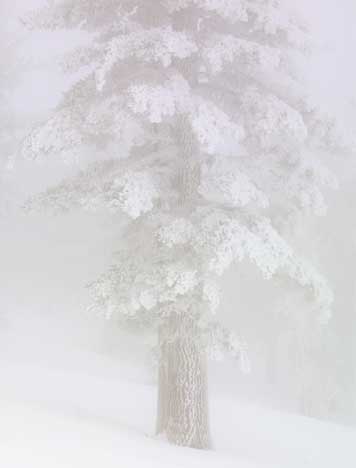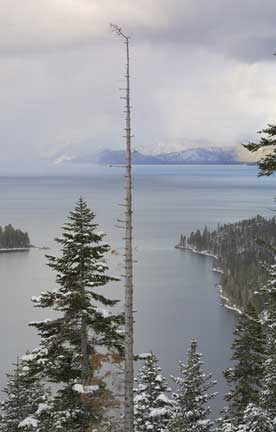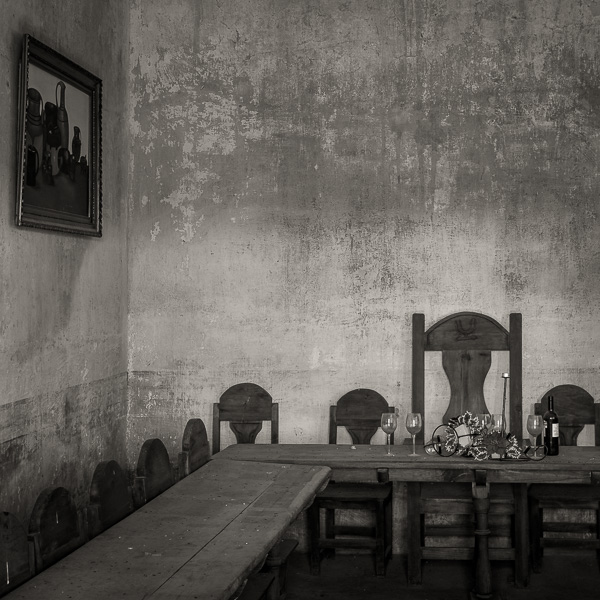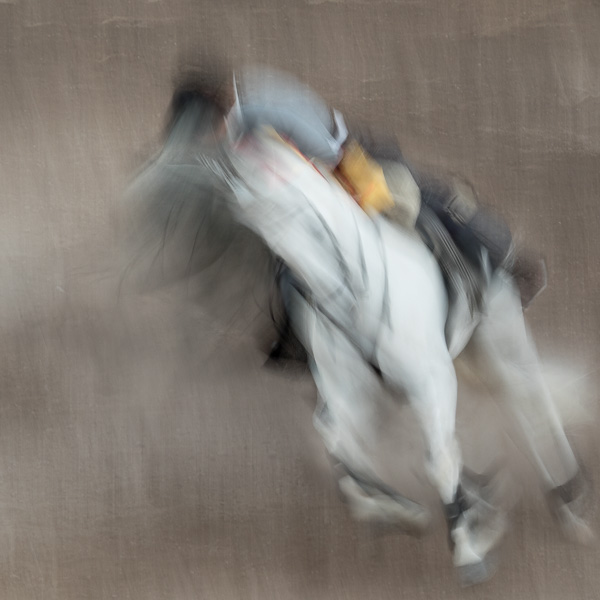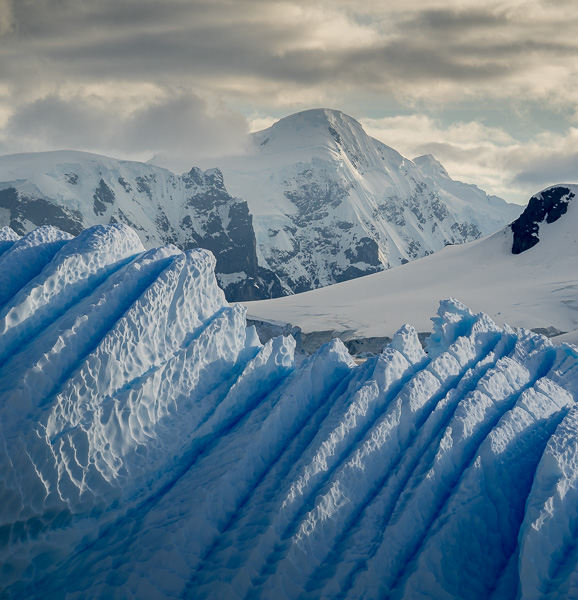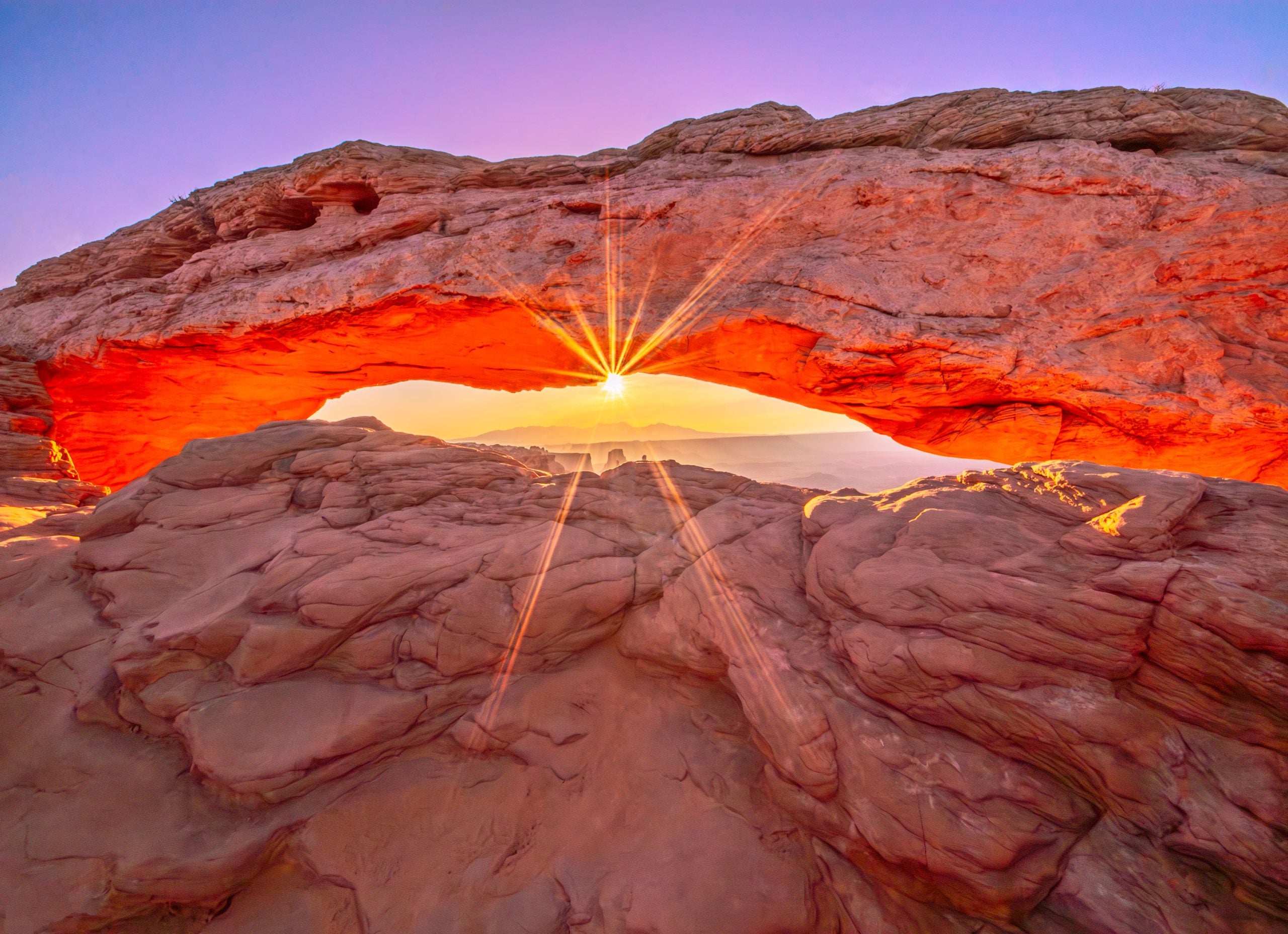Skiing at f/11
I’m a skier, and at least once each winter I try and take a ski vacation somewhere in the Rockies or the Sierra. When I do I like to combine the trip with an opportunity to do some landscape photography. I canÃt ski for more than 3-4 hours a day and so that leaves lots of time, particularly during best light at the beginning and the end of the day.
The mountains in winter provide excellent landscape, nature and wildlife photographic opportunities. Turning a ski trip into a shoot is also a way of maximizing your travel dollars. But combining serious photography with a ski trip presents a challenge in terms of equipment transport. A ski bag, a boot bag and a suitcase are a bulky load, not to mention the maximum that the airline will transport, and so putting together a small and light-weight photographic kit that can be part of ones carry-on is the only real solution.
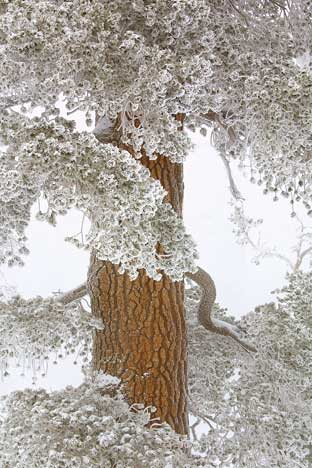 Lake Tahoe Tree #5‚ Nevada, 2001
Lake Tahoe Tree #5‚ Nevada, 2001
Taken with a Canon D30 and 28~135mm lens at ISO 200
There are some small medium format systems, such theMamiya 6and7, as well as severalFujifolders. But, I find that a 35mm body along with a medium-range zoom lens provides the best combination of versatility and portability.
In late January 2001 a friend and I went on a three-day ski trip to theHeavenlyski resort, located on the southwestern boarder of Nevada and California. I decided to use the new digitalCanon D30, as it is increasingly replacing my 35mm film-based cameras. Which lens to bring was a concern. I knew that I could only use one lens while I was on the mountain. Changing lenses standing in blowing snow while on skis half-way down a mountain is not a great idea, and carrying more than a body and one lens not terribly practical.
Canon EF 28~135mmf/3.5-f/5.6 IS Zoom
Though I have a large selection of Canon’s premium "L" series lenses none really fit the bill. Just before the trip I ended buyingCanonÃs 28~135mm f/3.5-f/5.6 IS zoomand it was my primary lens while skiing. On the D30, with its 1.6X magnification factor, it didn’t have the wide coverage that I would need so I also brought along theSigma 14mm f/2.8. This lens was only used though when shooting from the car, early and late in the dayƒ± never on the slopes.
I did a few tests of the Canon zoom before the trip and found that as long as I wasnÃt shooting wide-open image quality was quite good. Not quite at the "L" level, but more than acceptable. Two things make this lens a standout. The first is its very small size and weight. Not much bigger than a fast fixed-focus 50mm lens, I found that itÃs an almost ideal carry-around lens for many applications. The thing that sets it apart from any other lens though is that itÃs anImage Stabilized (IS)lens, and the one with the widest-angle coverage of any such lens. (The fact that it retails for under US $500 is an added bonus).
With IS the lens can be hand-held at 2 stops slower a shutter speed than with a none IS lens. This then makes it almost as usable in some conditions as an f/2.8 lens.
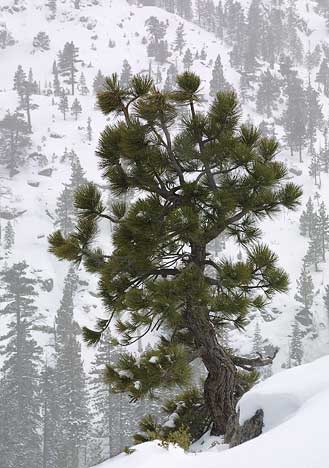 Lake Tahoe Tree #1‚ California, 2001
Lake Tahoe Tree #1‚ California, 2001
Taken with a Canon D30 and 28~135mm lens at ISO 100
This photograph was taken during a moderate snow flurry. Not enough snow to interfere with the clarity of the tree but just enough to soften the background hillside. The monochromatic contrasts, combined with the dark-green of the pine as the only subtle touch of colour, makes for a strong image.
Though I use a tripod almost all of the time when doing landscape work, I could neither pack one on this trip nor could use one in many of the locations that I found myself shooting in. I therefore had high-hopes for this stabilized medium-wide to medium-telephoto lens and happily it didn’t disappoint. Because the lens is slow compared to the F/2.8 L series lenses that I normally use, much of the time I had the D30 set to ISO 200 to compensate. Since the D30 gives up almost nothing at this speed in terms of grain or colour rendition it was a combo that worked well under bright to moderate outdoor light conditions. (Since this lens should be used stopped down at least two stops to F/8 or F11 for best performance I consider it to be inappropriate for most situations other than outdoor work.)
On The Slopes
A trip like this one offers two different photography opportunities, on slope and off. Doing photography while skiing can be fun, but it takes a bit of preparation. As mentioned above, while there are medium format cameras (especially folders) that are suitable, I find that a 35mm camera with a medium-range zoom lens is preferable. When shooting from skis there is almost never an opportunity to change position, either because of cliffs, trees or the traffic of other skiers. This makes the use of a zoom almost a necessity, and as mentioned already you really donÃt want to be changing lenses while standing on skis at a 30-degree angle.
Your camera can be carried in a fanny-pack or a small rucksack. Anything bulkier is going to interfere with your skiing or safety. You can carry a camera around your neck, under your ski jacket, but there is a safety issue with doing this, as if you fall forward youÃll likely not only have a smashed camera but also some broken ribs. I do carry my camera this way occasionally, but only when skiing slowly and exploring an area. Once I resume normal skiing it goes back into the rucksack. A small towel is useful for cushioning the camera in the bag and also for wiping off excess snow and moisture.
Taken with a Canon D30 and 28~135mm lens at ISO 100
The fog was so thick on the slopes that morning that I stopped for safety rather than to take a photograph. But, since I was standing there I made this photograph. This is as it was‚ no contrast adjustment whatsoever.
This is a good time to mention camera-care in these types of conditions. Unless it’s raining hard (in which case itÃs unlikely that you’ll still be on the slopes) thereÃ’s no real issue with using your camera in these conditions. Moderate cold and light snow have little effect on modern equipment. Many photographers, particularly newcomers, are far too concerned about babying their gear and confuse abuse with judicious use. Usually if you’re not too uncomfortable, either due to precipitation, heat or cold, neither will be your equipment.
Of interest to Canon D30 owners will be my experience using the camera for 3 days atHeavenly. The temperature ranged from 15F to 25F (-10C to -5C) and from moderate snow, to dense fog, to brilliant sunshine. It never missed beat. Since I was using a1GB IBM MicrodriveI was also curious to see what would happen since much of the time I was between 9,000 and 10,000 feet altitude (3,000 meters). IBM has let it be known that Microdrives may not work above 9,000 ft because the drive’s heads use a cushion of air as they fly above the platter, and above this altitude there simply arenÃt enough air molecules to provide that cushion. IÃm pleased to report that I shot more than 100 frames at above this altitude and experienced no problems whatever.
Off Slope
Winter shooting in the mountains can be done from ones vehicle, but also from cross-country skis, snowmobiles and snowshoes. In the latter three cases functional issues are much the same as when downhill skiing. Shooting from a vehicle is not much different than normal except that extra caution is needed when pulling off the road because of snow and ice conditions.
Taken with a Canon D30 and 28~135mm lens at ISO 100
Lake Tahoe
About 50 miles south ofReno,Lake Tahoeis an all-season resort. Because itÃs in Nevada, (at least the north end of town is) thereÃs gambling, and for those that like that sort of thing this will add to the interest. Heavenly is a large ski resort that can be accessed right from in the town via a gondola, or from many condos, hotels and rental facilities scattered around the mountain.
In the few days that I was there I found three areas of photographic interest. The first 10 miles or so ofHwy 89, as it leavesSouth Lake Tahoeand follows the western shore of the lake is extremely beautiful, with the road climbing high into the surrounding mountains and offering numerous turn-outs and vista points overlooking the lake. If youÃre lucky enough to be there on a day with some active weather, as I was, youÃll be rewarded with excellent photographic opportunities.
Be aware though that when the weather is bad this road is restricted to 4WD vehicles or cars with snow chains, so an SUV rental is a good idea. While the Nevada and California highways departments do an exceptional job of keeping the areas roads passable in winter, normal cautions for driving in the mountains in winter should be observed.
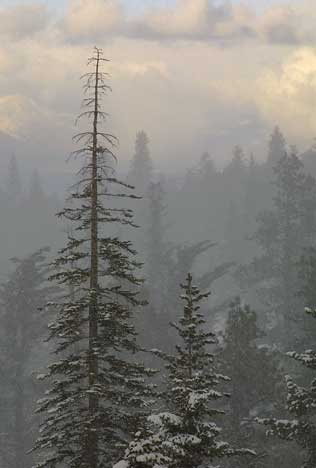 Western Sky & Pines‚ California, 2001
Western Sky & Pines‚ California, 2001
Taken with a Canon D30 and 28~135mm lens at ISO 100
Again, the light snow falling added a softening effect to the distant trees and clouds. This is something that one sometimes sees in historical Western paintings. No filters, no special effects‚ just nature doing its thing.
The rest of the drive northward around the lake is quite uninteresting. Once you get toIncline Villageand start heading south down the east side of the lake the scenery gets interesting again and lovely views westward across the lake are available from a number of well-placed overlooks. Circumnavigating the lake will take 2-4 hours, depending on how often you stop.
The third easily accessible area isHwy 207, also known as theKingsbury Grade. Once past the summit the road offers compelling views of theCarson Valleyas you descend some 2,500 feet to the valley floor on the other side of the mountain.
Expose Yourself
If youÃre not familiar with shooting in winter have a look at my tutorial onExposing Snow. Briefly, your cameraÃs built-in meter sees a large expanse of snow as gray; because 18% gray is what all meters assume is in front of them. A typical scene with trees, rocks and people meets this criterion and most modern cameras haveƒ¬smartî metering systems that understand the effect of bright skies in the frame. Snow though will fool almost every meter and so setting the cameraÃs exposure compensation for an additional 1 to 1.5 stops of exposure is needed.
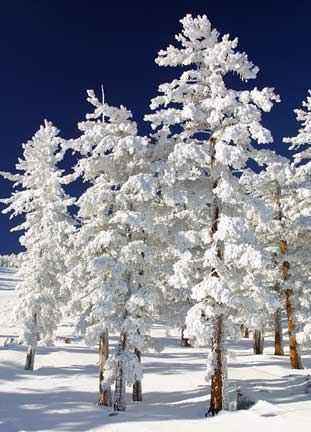 Snow Clad Tress‚ Nevada, 2001
Snow Clad Tress‚ Nevada, 2001
Taken with a Canon D30 and 28~135mm lens at ISO 200
This was taken from a moving ski chair. I used a polarizer so as to deliberately blacken the sky and maximize contrast on this glaringly brilliant day. Because of the slow lens and reduced light caused by the polarizer and a high shutter speed needed to stop motion on the moving chair, I upped the ISO setting to 200. Exposure compensation was 1.5 stops.
Traveling light probably means leaving ones split neutral density filters at home. But a polarizer can really come in handy in the mountains and is the one filter not to leave at home. If youÃre concerned about blowing snow on your front lens element a Skylight or UV filter will also be found to be worthwhile.
Weather
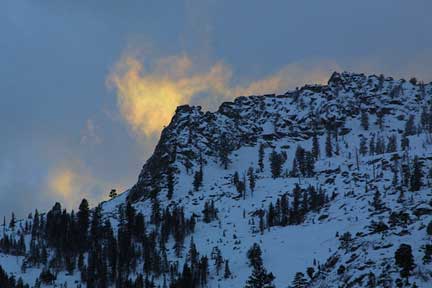 Blue Cliff and Clouds‚ California, January 2001
Blue Cliff and Clouds‚ California, January 2001
Taken with a Canon D30 and 28~135mm lens at ISO 400
It should go without saying that weather is a photographer’s friend. On two of the three days that I had in the Tahoe region we had active weather, ranging from clouds, snow and high-winds to fog. While the latter compromised skiing it provided for some great photographic opportunities.
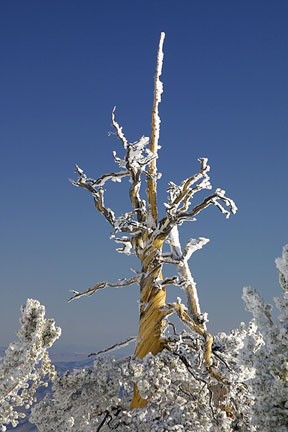 Branches & Sky‚ California, January 2001
Branches & Sky‚ California, January 2001
Taken with a Canon D30 and 28~135mm lens at ISO 200
Weather of course also comes in the incredibly crisp, sharply brilliant 10,000 feet above sea-level thin mountain air variety. Who says you can’t shoot on a sunny day.
Read this story and all the best stories on The Luminous Landscape
The author has made this story available to Luminous Landscape members only. Upgrade to get instant access to this story and other benefits available only to members.
Why choose us?
Luminous-Landscape is a membership site. Our website contains over 5300 articles on almost every topic, camera, lens and printer you can imagine. Our membership model is simple, just $2 a month ($24.00 USD a year). This $24 gains you access to a wealth of information including all our past and future video tutorials on such topics as Lightroom, Capture One, Printing, file management and dozens of interviews and travel videos.
- New Articles every few days
- All original content found nowhere else on the web
- No Pop Up Google Sense ads – Our advertisers are photo related
- Download/stream video to any device
- NEW videos monthly
- Top well-known photographer contributors
- Posts from industry leaders
- Speciality Photography Workshops
- Mobile device scalable
- Exclusive video interviews
- Special vendor offers for members
- Hands On Product reviews
- FREE – User Forum. One of the most read user forums on the internet
- Access to our community Buy and Sell pages; for members only.






